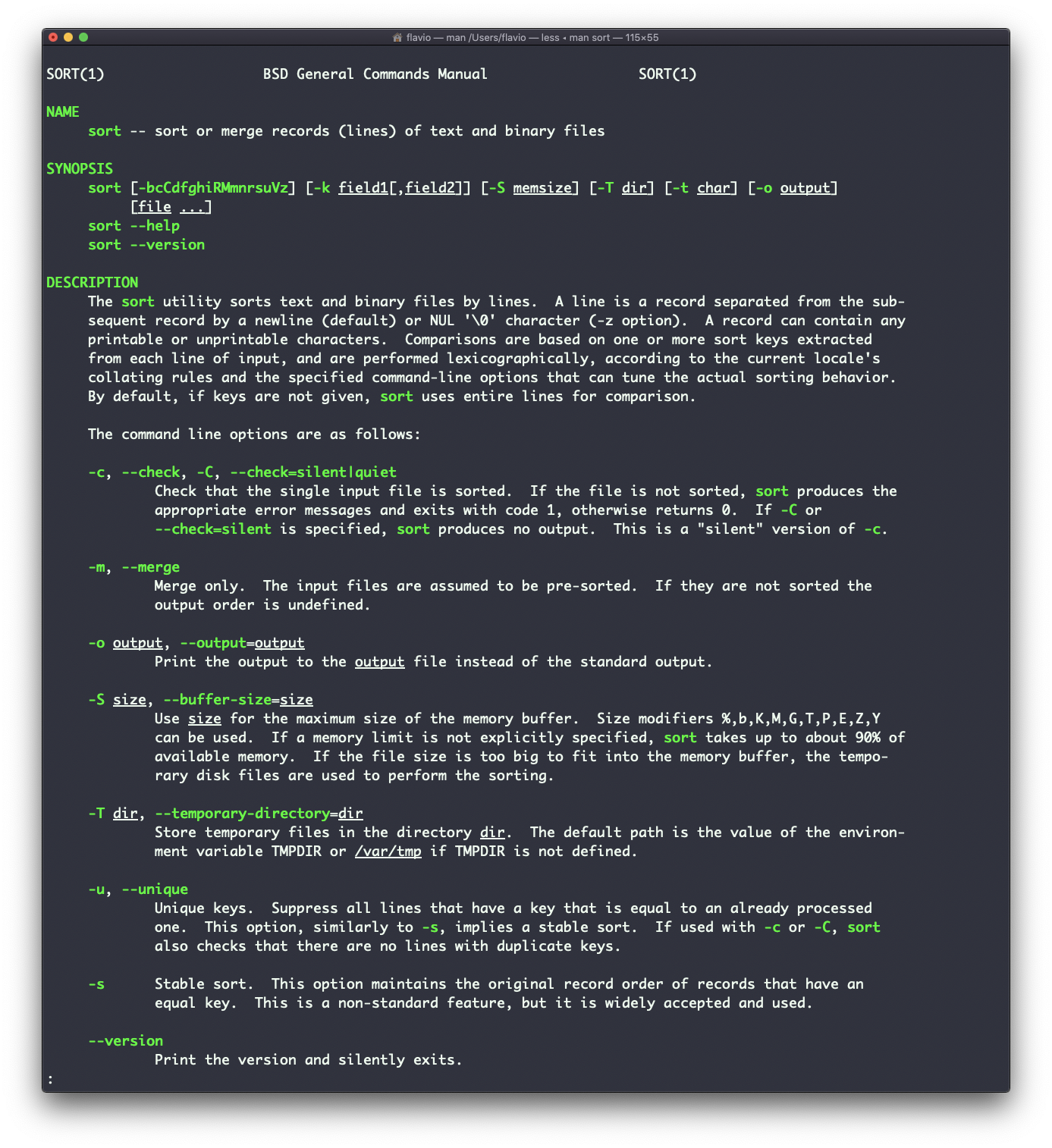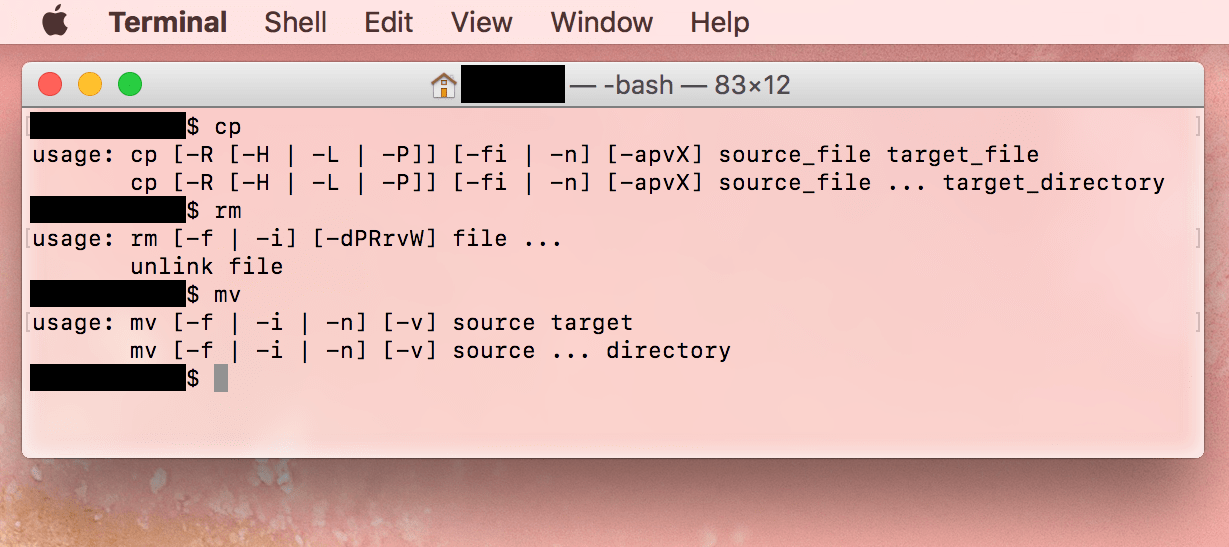-->
The man command is a built-in manual for using Linux commands. It allows users to view the reference manuals of a command or utility run in the terminal. The man page (short for manual page) includes a command description, applicable options, flags, examples, and other informative sections. The basic structure of a command packet from the host to the drive is always a text string followed by a carriage return (no line feed required). The text string is always composed of the command itself, followed by any parameters used by the command. If using an RS-485 drive then every command needs to be preceded by an address character. Make Terminal windows stand out with profiles. When you’re logged in to several servers, unique background colors and window titles specified in profiles help you easily spot the right Terminal window. Use profiles built into Terminal, or create your own custom profiles. How to create profiles for Terminal windows. The Terminal works by entering commands on the keyboard and pressing return to execute the commands. The Terminal will then respond after the command has been executed with any relevant information.
Install

To try the latest preview features, you may also want to install Windows Terminal Preview.

Note
If you don't have access to the Microsoft Store, the builds are published on the GitHub releases page. If you install from GitHub, Windows Terminal will not automatically update with new versions. For additional installation options using a package manager (winget, chocolatey, scoop), see the Windows Terminal product repo.
Set your default terminal application (Preview)
To open any command line application with Windows Terminal, set it as your default terminal application.
- Open Windows Terminal and go to the Settings UI window.
- Select Startup and choose 'Windows Terminal' as the Default terminal application setting.
Important
This feature is only available in Windows Terminal Preview.
Set your default terminal profile
After installation, when you open Windows Terminal, it will start with the PowerShell command line as the default profile in the open tab.
To change the default profile:
- Open Windows Terminal and go to the Settings UI window.
- Select Startup and choose the Default profile that you prefer.
You can also set your default profile in the Settings.json file associated with Windows Terminal if you prefer.

Add new profiles
Windows Terminal will automatically create profiles for you if you have WSL distributions or multiple versions of PowerShell installed.
Your command line profiles will be listed in the Settings UI, in addition to the option to + Add new profiles.

Learn more about dynamic profiles on the Dynamic profiles page.
Open a new tab
You can open a new tab of the default profile by pressing Ctrl+Shift+T or by selecting the + (plus) button. To open a different profile, select the ˅ (arrow) next to the + button to open the dropdown menu. From there, you can select which profile to open.
Invoke the command palette
You can invoke most features of Windows Terminal through the command palette. The default key combination to invoke it is Ctrl+Shift+P. You can also open it using the Command palette button in the dropdown menu in Windows Terminal Preview.
Open a new pane
You can run multiple shells side-by-side using panes. To open a pane, you can use Alt+Shift++ for a vertical pane or Alt+Shift+- for a horizontal one. You can also use Alt+Shift+D to open a duplicate pane of your focused profile. Learn more about panes on the Panes page.
Terminal Commands Manual Pdf
Configuration
To customize the settings of your Windows Terminal, select Settings in the dropdown menu. This will open the settings UI to configure your settings. You can learn how to open the settings UI with keyboard shortcuts on the Actions page.
Terminal Commands Manual For Windows 10
Tip
If you prefer to configure your settings by editing a JSON file, select Settings in the dropdown menu while holding Shift. This will open the settings.json file in your default text editor. (The default text editor is defined in your Windows settings.)The terminal supports customization of global properties that affect the whole application, profile properties that affect the settings of each profile, and actions that allow you to interact with the terminal using your keyboard or the command palette.
Command line arguments
You can launch the terminal in a specific configuration using command line arguments. These arguments let you open the terminal with specific tabs and panes with custom profile settings. Learn more about command line arguments on the Command line arguments page.
Troubleshooting
Terminal Commands Macbook Pro
If you encounter any difficulties using the terminal, reference the Troubleshooting page. If you find any bugs or have a feature request, you can select the feedback link in the About menu of the terminal to go to the GitHub page where you can file a new issue.